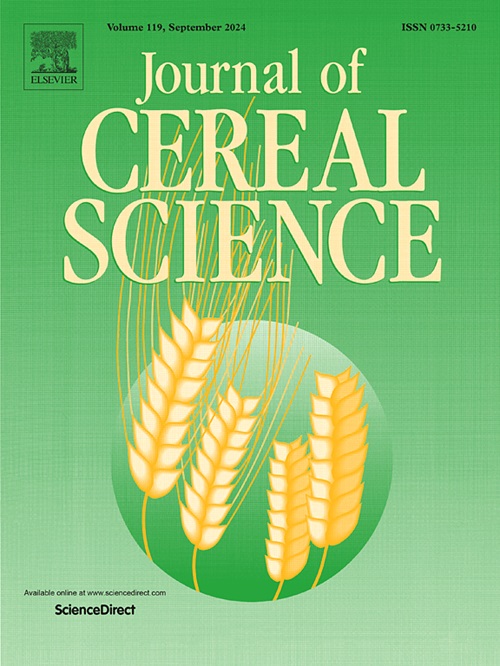酿酒商的废谷物(BSG)作为发酵面包的原料:挑战和机遇
IF 3.7
2区 农林科学
Q2 FOOD SCIENCE & TECHNOLOGY
引用次数: 0
摘要
啤酒生产会产生大量的副产品,包括啤酒的废谷物(BSG)、废啤酒花和废酵母,这些副产品在酿造后通常几乎没有用处,通常被丢弃在垃圾填埋场,造成温室气体排放。BSG已在开发各种食品原型(如面包)中得到了应用,以缓解这一问题。发酵面包传统上是用小麦粉制作的,因为小麦含有谷蛋白和麦胶蛋白,它们负责形成谷蛋白网络。在面筋网络形成的过程中,气体被困在结构中,使面包膨胀。BSG和小麦粉之间化学成分的差异通过提高膳食纤维、矿物质和蛋白质含量而改变了面包的化学成分。此外,添加BSG可以提高发酵面包中生物活性化合物的含量。然而,由于膳食纤维含量的增加,面筋网络的稀释改变了面包的质地,从而改变了消费者的接受度。一般来说,高达10%的部分替代比使用更高浓度的BSG效果更好。这篇综述文章旨在收集和讨论在面包中加入啤酒糟(BSG)的影响,主要集中在啤酒糟对面包质地、生物活性化合物和感官分析的影响。本文章由计算机程序翻译,如有差异,请以英文原文为准。
Brewer's spent grain (BSG) as an ingredient for leavened bread making: challenges and opportunities
Beer production generates a high quantity of by-products, including brewer's spent grain (BSG), spent hops, and spent yeast, which often have little to no use after brewing and are typically discarded in landfills, contributing to greenhouse gas emissions. BSG has been valorized in developing various food prototypes, such as bread, to mitigate this issue. Leavened bread is traditionally prepared using wheat flour, as wheat possesses glutelins and gliadins, which are responsible for creating the gluten network. During the gluten network formation, gas gets trapped in the structure, making bread rise. The differences in the chemical composition between BSG and wheat flour generate changes in the chemical composition of bread by improving the dietary fiber, mineral, and protein content. Additionally, incorporating BSG improves the content of bioactive compounds of leavened bread. However, the dilution of the gluten network due to the increased dietary fiber content modifies the texture of bread, consequently changing consumers' acceptability. In general, a partial substitution of up to 10 % has shown better results than using higher concentrations of BSG. This review article aims to gather and discuss the effect of incorporating brewer's spent grain (BSG) into bread, focusing mainly on the impact of the BSG on the bread texture, bioactive compounds, and sensory analysis.
求助全文
通过发布文献求助,成功后即可免费获取论文全文。
去求助
来源期刊

Journal of Cereal Science
工程技术-食品科技
CiteScore
7.80
自引率
2.60%
发文量
163
审稿时长
38 days
期刊介绍:
The Journal of Cereal Science was established in 1983 to provide an International forum for the publication of original research papers of high standing covering all aspects of cereal science related to the functional and nutritional quality of cereal grains (true cereals - members of the Poaceae family and starchy pseudocereals - members of the Amaranthaceae, Chenopodiaceae and Polygonaceae families) and their products, in relation to the cereals used. The journal also publishes concise and critical review articles appraising the status and future directions of specific areas of cereal science and short communications that present news of important advances in research. The journal aims at topicality and at providing comprehensive coverage of progress in the field.
 求助内容:
求助内容: 应助结果提醒方式:
应助结果提醒方式:


